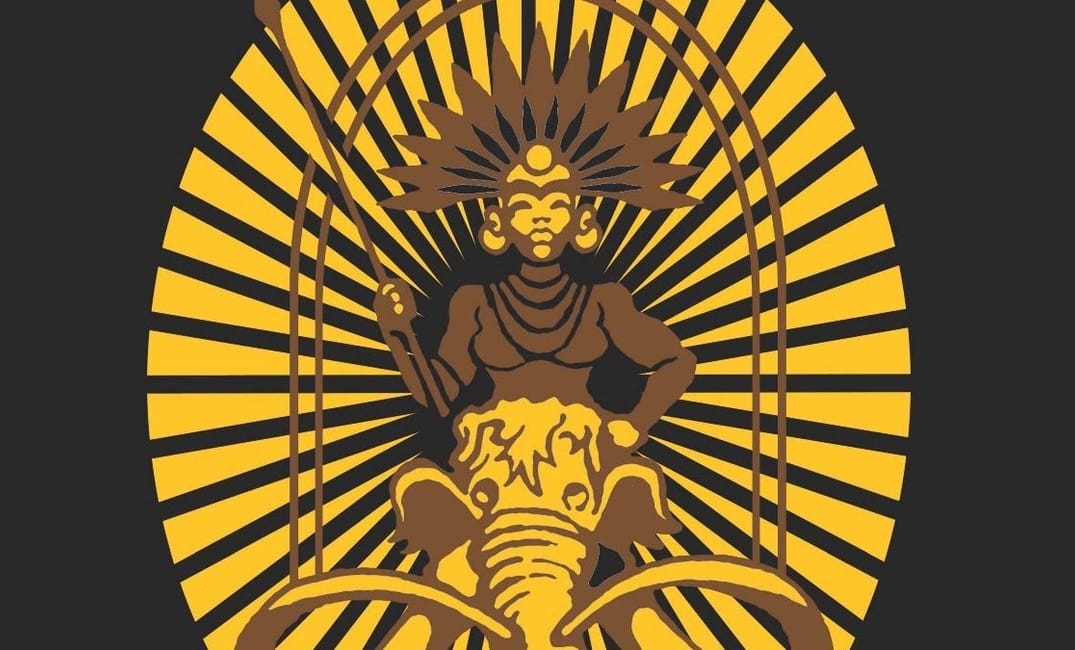
Know this — due east of the Indies there is an island called “California” — just by the terrestrial paradise. It was populated by Black Amazons… they were clad in armor of gold, as were the beasts upon which they rode… there reigned in the island of California the mighty and beautiful Queen Calafia.
So begins the story of Queen Calafia, as told by Spanish author Garci Rodríguez de Montalvo in his series Las Sergas de Esplandián (The Adventures of Esplandián), written in the late 15th century. This story was one of his most popular, and is even mentioned in Don Quixote as part of the main character’s library. The story may have also motivated Spanish conquistador Hernán Cortés and other explorers to seek out the mythical “island” that lay at the edge of their known world, off the west coast of North America.
When he set sail in 1535, Cortés probably had the story in mind as his ships sailed north along the Pacific coast of Mexico, finding what appeared to be an island. Thinking of the mighty Black Amazons and the gold they might find, the men called it:
California.
Of course, Cortés wasn’t on an island at all, but rather the peninsula now known as California. Cortés opened the door to colonization of the land by Spanish conquerors and other European powers.
Sign up for The Bold Italic newsletter to get the best of the Bay Area in your inbox every week.
The origin of how the name of California came to be was lost for centuries. In 1862, author and historian Edward Hale discovered the reference to the island of California and its Queen Calafia in Las Sergas de Esplandián. With great flourish, Hale published his discovery in the March 1864 edition of the Atlantic Monthly, announcing that the true queen of California was “not petite nor blond nor golden-haired” but “large and Black.”
Historians now agree that the story of the Black Amazon queen was the true source of the name of California.
Today, Queen Calafia is portrayed on murals throughout California, such as this one in the Mark Hopkins Hotel in San Francisco.

But Queen Calafia did not fare so well in the story as told originally by Montalvo. The “mighty and beautiful queen” set sail with her great fleet of ships, filled with her warriors and 500 griffins — mythical half-lion, half-eagle beasts who were “trained since birth to feed on men” — to join the Battle of Constantinople on the side of the Turks. While the story was fictional, it was based on a real battle which took place in Montalvo’s lifetime. Unlike the true history — in which this last vestige of the Roman Empire fell to the Ottoman army under Sultan Mehmed II — Montalvo’s revision had the Christian armies defeating what he calls the “infidels,” including Queen Calafia.
Heroines don’t have to win every battle; a defeated Queen Calafia could have sailed back to rule California again. But in Montalvo’s fantasy, Queen Calafia was not the heroine — she was the object of conquest for the male heroes of the story. Against all logic, the fierce and proud Amazon queen falls in love with one of the knights who defeated her, abandons her queendom, converts to Christianity, and marries one of the knights (not even her first choice!). What an inglorious end for such a mighty queen! This should not be surprising — the story was a fantasy by and for Spanish men of the 15th century.

The Spanish men who arrived on the Pacific soil found, however, that the real people who resided on the land now known as California would not submit as easily as in Montalvo’s fantasy. When the colonizers tried to effectively enslave the Native people of California into service in the missions, some rose up in rebellion. One was Toypurina, a young Tongva/Kizh woman, who led a revolt against the San Gabriel Mission that nearly succeeded. Toypurina is still regarded as a symbol of California Native women’s protests against Spanish colonialism, celebrated in images across the state, such as the one above.
Queen Calafia remains an icon and example of a powerful Black woman in her state of California and beyond. I was inspired by her story to name my book-publishing company after her: Queen Calafia Publishing. I owe my eternal allegiance and love to the Black queen who created the image of Calafia at the beginning of this article: my wife Jerolyn Crute Sackman.
Let us each honor our own Queen Calafia, and encourage the next generation of Queen Calafias to take pride in their own power.
To read more about the story and context of Queen Calafia, see The Chronicles of California’s Queen Calafia, selection and introduction by Mozelle Sukut, PhD, translation by Constance Kihyet, PhD (Trails of Discovery 2007).







